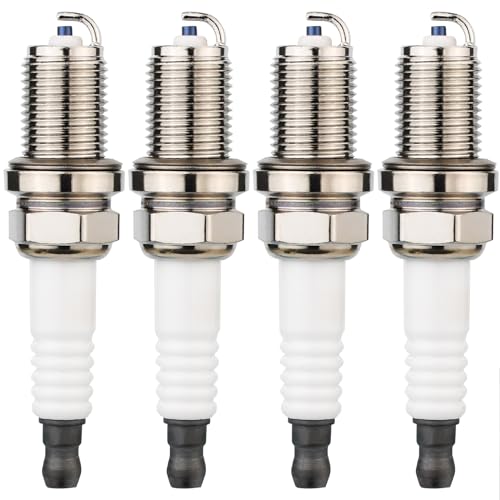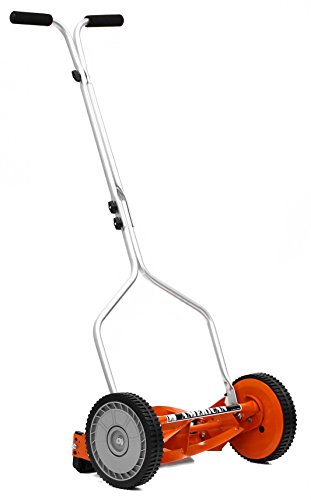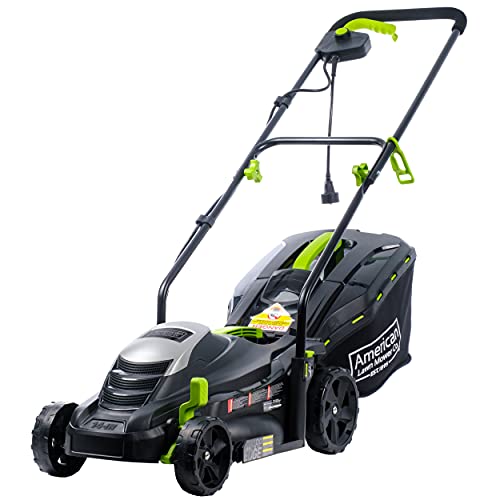Are you wondering if using your electric lawn mower in the rain is safe? It’s a common question among homeowners who want to keep their lawns neat and tidy, even during bad weather.
When it comes to mowing wet grass, there are some important things to consider.
First and foremost, it’s crucial to understand that wet grass can be slippery, increasing the risk of accidents while operating a lawn mower.
Wet conditions also make it more difficult for the blades to cut through the grass, leading to an uneven cut or clogging of the mower deck.
Additionally, moisture from rain can damage various components of your electric lawn mower, such as the electrical wiring or motor.
Join us as we explore the dangers of mowing wet grass and the potential effects of rain on your lawn mower.
Dangers of Mowing Wet Grass
If you’re mowing wet grass with an electric lawn mower in the rain, you risk a potential shock.
Water and electricity don’t mix well, and using an electric lawn mower that’s plugged into a standard household outlet can be extremely dangerous in wet conditions.
A standard 120v outlet even has the potential to kill you if something goes wrong.
In addition to the electrical danger, there is also a risk of slipping and falling when mowing wet grass.
Pushing a heavy mower through damp or muddy terrain can make it much more challenging for your feet to keep traction. It increases the likelihood of losing balance and potentially falling onto a running mower.
Whether your lawn mower is electric or not, falling on one can lead to severe injury or death.
Plus, rainy weather often leads to reduced visibility due to foggy or misty conditions. It makes it harder for you to see obstacles or potential hazards that may be hiding in the grass while mowing.
To mitigate these risks, you can take certain precautions.
Using a UL-listed extension cord rated for outdoor use with three prongs for grounding purposes can help reduce the chances of injury compared to using a cord that doesn’t meet these requirements.
Always ensure the power cord is kept away from water sources, and avoid mowing over areas with standing water.
On top of that, take extra caution by moving slowly and being vigilant about scanning your surroundings before each pass with the mower.
You could also wear appropriate footwear with non-slip soles that provide a good grip on wet surfaces.
Still, even with these precautions in place, it’s best to avoid mowing wet grass altogether if possible.
Effect of Rain on Lawn Mower

The effect of rain on your lawn mower can range from minor inconveniences to serious issues.
First, rain can cause problems with the spark plug, potentially leading to difficulty starting or running.
Second, water in your fuel might also be a nuisance, as it can prevent the engine from running smoothly.
Lastly, rain can impact the air intake of your mower, affecting its overall performance.
It’s essential to be aware of these factors and take necessary precautions to avoid potential safety hazards.
Let’s go over them in more detail below.
Spark Plug
The spark plug is a crucial component of your electric lawn mower. It’s responsible for igniting the fuel in the combustion chamber.
If there’s any looseness in the spark plug cover or moisture builds up around it, it can cause the spark plug to not fire properly or foul out.
When the spark plug doesn’t fire properly, your engine won’t operate at its best. This situation can lead to a decrease in performance and efficiency while mowing your lawn.
To prevent this from happening, regularly check and tighten the spark plug cover to ensure a secure fit.
At the same time, make sure to keep moisture away from the area surrounding the spark plug. Water can cause electrical issues and interfere with proper sparking.
Water In Your Fuel
Water in the fuel can have detrimental effects on the performance and longevity of your electric lawn mower.
Here are five ways water in your fuel can negatively affect your lawn mower:
- Poor performance: Water mixed with fuel disrupts its combustion process, leading to reduced power output from the engine. It can result in slower mowing speed and an overall decrease in cutting efficiency.
- Stalling and stopping: The presence of water in the fuel line or carburetor can cause interruptions in fuel delivery, leading to frequent stalling or even complete engine shutdown. This not only hampers productivity but also increases frustration during mowing sessions.
- Hard starting: Water contamination can make it difficult for the engine to start, requiring more attempts and longer cranking times. It adds unnecessary strain on the motor and may lead to premature wear and tear.
- Corrosion: Over time, water in the fuel system can lead to corrosion in various components, such as fuel lines, tank, and carburetor. Corrosion weakens these parts, increasing the risk of leaks or failure that could necessitate costly repairs or replacements.
- Reduced lifespan: Continuous exposure to water-contaminated fuel accelerates wear on internal engine parts due to poor lubrication and increased friction. It ultimately shortens the lifespan of your electric lawn mower.
Air Intake
The air intake of your mower is like a gateway for potential trouble, as even a small amount of moisture can wreak havoc on its performance.
When water gets into the air intake, it has the potential to be sucked into the cylinder and cause damage. This is especially concerning because water can leak past the rings and make its way into the sump, further compromising the engine’s functionality.
While this may not be a common occurrence for most mowers, it is still something to be aware of and take precautions against.
To help you understand the impact of water on your mower’s air intake, let us provide you with an analogy.
Imagine that your air intake is like a door that allows fresh air to enter your mower’s engine. Now, picture moisture as an unwelcome guest trying to barge in through that door.
Just like how you wouldn’t want someone dripping wet coming into your home and causing chaos, having water in your mower’s air intake can create similar problems for its performance.
Mowing Wet Grass

Although it’s generally recommended to wait until the grass has dried out after a rain shower, sometimes circumstances may not allow for that luxury.
So, if you find yourself in a situation where you need to mow wet grass, you can do a few things to ensure the best results.
Firstly, make sure your electric lawn mower is equipped with sharp blades. Wet grass already poses challenges for a clean cut, and dull blades will only worsen its quality further.
Consider replacing your blades with new ones or sharpening them before tackling wet grass.
Next, adjust the height of your mower deck by raising it slightly. Cutting the grass at a higher height will help prevent clogging at the bottom of the deck and reduce stress on your engine.
This adjustment can make a significant difference in how well your electric lawn mower performs in wet conditions.
When mowing wet grass with an electric lawn mower, it’s also advisable to use a side shoot instead of mulching.
Mulching doesn’t work effectively on damp or wet grass and can lead to clogs in both the chute and under the deck. By using a side shoot, you’ll be able to discharge clippings without risking blockages.
To further minimize any potential issues, remember to regularly clean and clear underneath your mower deck between passes. Doing so will help reduce stress on the machine and keep it running smoothly throughout the mowing process.
After mowing is complete, be sure to rake up any clippings that have been discharged onto piles of wet grass, as they can smother out underlying areas.
Drying Your Lawn Mower
Once you’re finished mowing, it’s time to dry your lawn mower.
Start by removing the water-resistant casing around the motor. It will allow air to circulate around the engine, which aids in the drying process.
Refer to your owner’s manual for instructions on how to safely remove the casing without causing damage.
To effectively dry out your electric lawn mower’s motor, there are a few options at your disposal.
One method is using compressed air to blow away any remaining moisture. This powerful burst of air helps to dislodge water droplets from hard-to-reach areas within the motor.
Another option is using a blow dryer on a low heat setting. Gently direct warm air onto the motor, making sure not to overheat or damage any components.
Alternatively, you can set up a fan near the exposed motor to facilitate evaporation and quicken the drying time.
Drying out your lawn mower’s motor may take some time, especially if it was exposed to rain for an extended period. Patience is key here, as allowing ample time for thorough drying is crucial in preventing further damage or malfunctions down the line.
You may need to leave your mower out in a well-ventilated area for up to 8 hours or even longer before all traces of moisture have dissipated completely.
How to Restore the Insulation Resistance of the Wiring
In some cases, wet conditions may have caused enough moisture ingress into your lawn mower’s wiring system that could weaken its insulation.
To assess this situation accurately, use a device called a megohmmeter. This handy tool allows you to measure the current resistance of the outer coating on your mower’s wiring and determine whether further steps are needed for proper drying based on its readings.
Remove as much moisture as possible from the motor and wiring before proceeding with this step.
Once you’re confident that most of the water has been removed, you can measure the insulation resistance.
To do so, use a megohmmeter and check the measurement until its insulation resistance reaches 100,000 ohms. If the reading is too low, continue waiting for further drying on its own.
When the reading reaches 100,000 ohms, the next step is to run a small amount of current through the motor. You can determine how much current to apply without overwhelming the engine by referring to your lawn mower’s owner’s manual.
Look for a voltage called “nameplate voltage,” which indicates a range of voltage at which your lawn mower’s battery operates when fully charged. Apply 10% of this voltage using an appropriate power source or battery charger to facilitate drying while minimizing risks.
After each application of current, re-test the insulation resistance of the wire winding around the motor shaft using a megohmmeter. Be patient and work methodically through these steps until you achieve satisfactory results.
The Bottom Line
In conclusion, using your electric lawn mower in the rain is not recommended. Mowing wet grass can pose physical dangers, such as slipping and falling, as well as potentially damaging the electrical components of the mower.
Rainwater can seep into the motor and other parts of the machine, causing corrosion and short circuits. This, in turn, can lead to a decrease in performance or even permanent damage to your lawn mower.
If you find yourself needing to mow your lawn after it has rained, it’s best to wait until the ground has dried out. It will offer a safer mowing experience and protect the longevity of your equipment.
Additionally, once you have finished mowing wet grass, it’s crucial to thoroughly dry off your electric lawn mower before storing it away.
Frequently Asked Questions
Can I use my electric lawn mower in heavy rain or only light drizzle?
You can use your electric lawn mower in light drizzle, but it is not recommended to use it in heavy rain. Water can damage the motor and pose a safety risk.
Is it safe to mow wet grass with a corded electric lawn mower?
It’s dangerous to mow wet grass with a corded electric lawn mower. Wet conditions increase the risk of electrical shock and damage to the equipment. Wait for the grass to dry before mowing.
Will mowing wet grass damage the blades?
Mowing wet grass can damage your lawn mower’s blades and other parts. Wet grass clumps together, causing clogging and potential rusting. It is best to wait for dry conditions before mowing to ensure the longevity of your equipment.
How long should I let my electric lawn mower dry after mowing wet grass before using it again?
After mowing wet grass, let your electric lawn mower dry for at least 24 hours before using it again. It will prevent any potential damage to the motor or other parts caused by moisture.
Are there any specific steps I should take to ensure the insulation resistance of the wiring is restored after mowing wet grass in the rain?
To ensure the insulation resistance of the wiring is restored after mowing wet grass in the rain, inspect the mower for any signs of damage, allow it to dry completely, and consider using a moisture-absorbing product.
Was it helpful?

Enamored with the world of golf Jack pursued a degree in Golf Course Management at THE Ohio State University. This career path allowed him to work on some of the highest profile golf courses in the country! Due to the pandemic, Jack began Inside The Yard as a side hustle that quickly became his main hustle. Since starting the company, Jack has relocated to a homestead in Central Arkansas where he and his wife raise cattle and two little girls.











